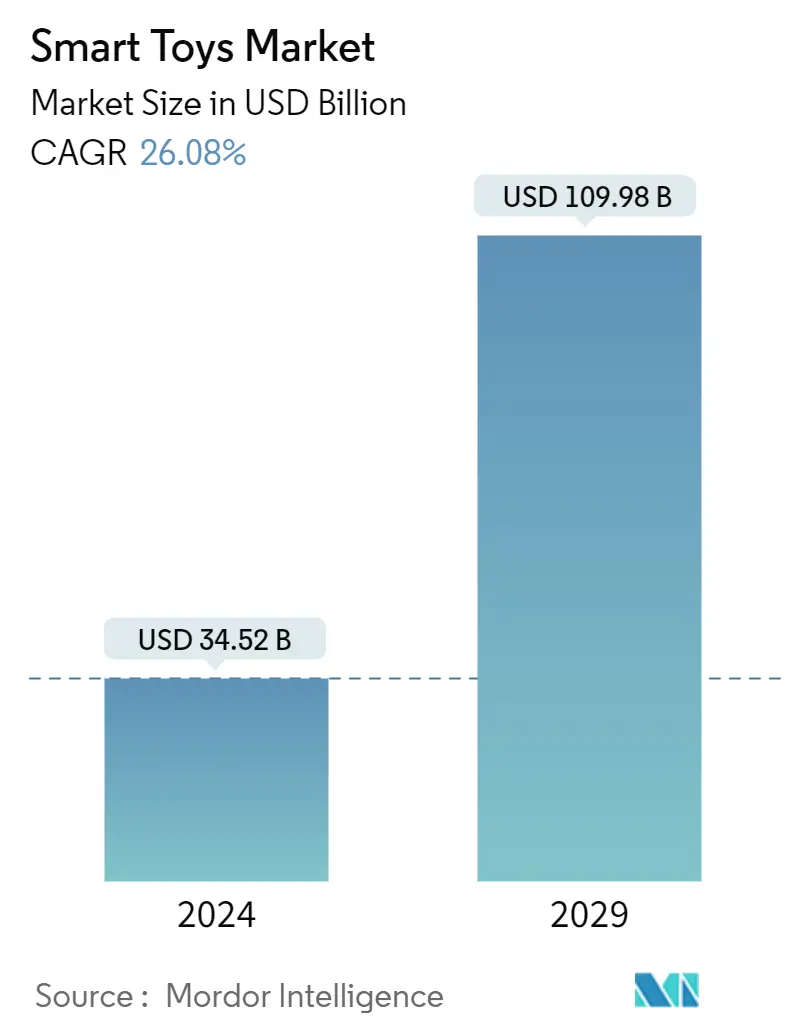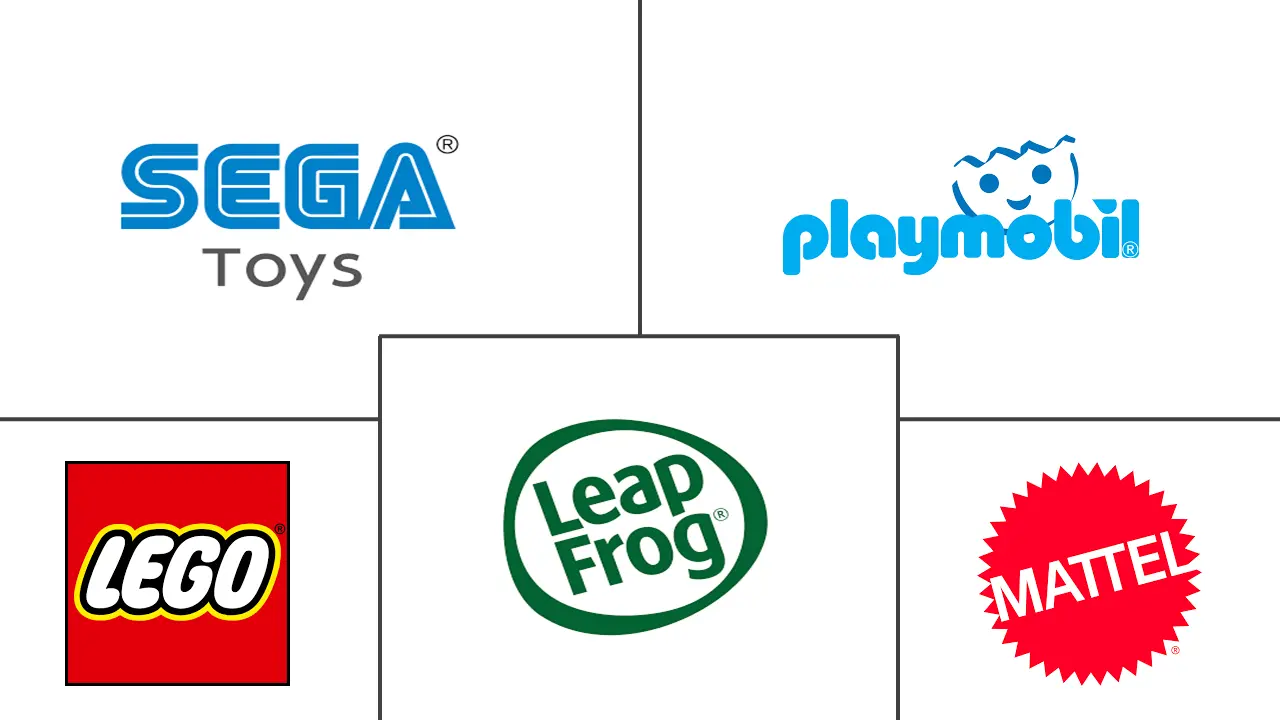Market Size of Smart Toys Industry

| Study Period | 2019 - 2029 |
| Market Size (2024) | USD 34.52 Billion |
| Market Size (2029) | USD 109.98 Billion |
| CAGR (2024 - 2029) | 26.08 % |
| Fastest Growing Market | Asia Pacific |
| Largest Market | Europe |
Major Players
*Disclaimer: Major Players sorted in no particular order |
Need a report that reflects how COVID-19 has impacted this market and its growth?
Smart Toys Market Analysis
The Smart Toys Market size is estimated at USD 34.52 billion in 2024, and is expected to reach USD 109.98 billion by 2029, growing at a CAGR of 26.08% during the forecast period (2024-2029).
The fast acceptance of the Internet of Things (IoT) accelerated the development of smart and connected devices for a wide range of applications. A number of technologies are used in smart toys, including IoT, artificial intelligence, smart devices, and many more, to improve children's learning and enjoyment experiences.
- With inbuilt software that allows speech and picture recognition, app integration, radio-frequency identification (RFID) capability, and online searching features, these toys give a personalized play experience for youngsters. CogniToys' Dino, for example, uses Wi-Fi to stay connected and IBM Watson's natural language processing technology to adapt its replies based on the child's age and ability level
- The usage of STEM (Science, Technology, Engineering, and Math) toys to assist children in developing their skills is one of the primary factors fueling demand for smart toys. Smart toys increase professional talents such as computers and engineering through smart engagement and behavioral learning. As parents continue to embrace goods that can aid in their children's intellectual development, the use of smart toys will increase. SmartGurlz toy, for example, teaches females how to code.
- Various factors driving the growth of smart toys include direct and two-way communication, real-time tracking of children's activities, and the ability to store personal data such as a child's name, photos, and voice recordings, which aid in the personalization of toys. Fisher-Price, for example, sells a Smart Toy Bear that may be operated via a smartphone app. Over the projected period, such advancements are likely to boost the market.
- However, rising worries about data and privacy issues as smart toys become more prevalent are projected to stymie industry development. As a result, various regulatory agencies are taking major measures and actions to limit the hazards associated with the use of these smart toys.
- The COVID-19 epidemic has led to widespread lockdowns throughout the world. As a precautionary measure, the mandated lockdown has increased work-from-home practices and forced the closure of schools and other educational institutions. Many schools, colleges, and institutions have been shuttered across the world. Such developments have boosted the prospects for the worldwide adoption of smart toys since they support remote learning practices and give youngsters fascinating and immersive experiences.
